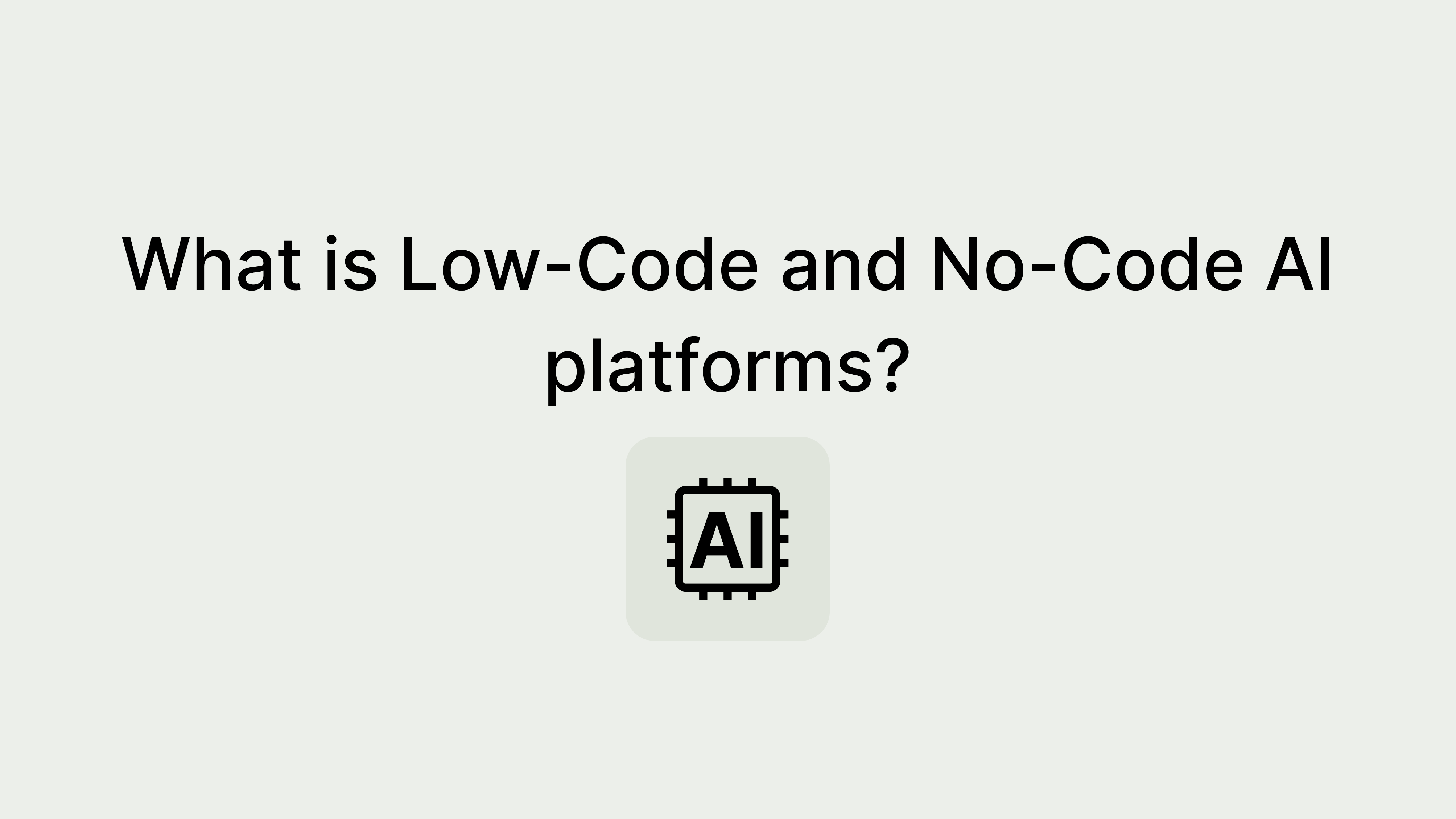Top 10 Low-Code and No-Code AI Platforms Examples

Artificial Intelligence (AI) has the power to revolutionize businesses, enhancing customer experiences and streamlining internal processes. However, the traditional barriers to entry, such as infrastructure investment and the need for a skilled workforce, can be daunting for many.
Fortunately, a new generation of no-code/low-code AI tools and platforms has emerged, making it excitingly accessible for everyone. Whether you’re a doctor, lawyer, marketer, teacher, or project manager, you can now harness the potential of AI without having to delve into technical coding. With user-friendly interfaces and simplified workflows, these tools empower users to create innovative applications that leverage machine learning.
What is Low-Code and No-Code AI platforms?
Low-code and no-code AI platforms refers to tools that enable individuals to develop AI applications without requiring extensive coding knowledge. These tools cater to professionals across various domains, allowing them to benefit from AI’s capabilities without dedicating significant time to learning complex coding languages.
Typically, low-code and no-code platforms operate through either drag-and-drop interfaces or wizard-like interfaces with drop-down menus. While these tools simplify the development process, a basic understanding of coding structure and syntax can still be advantageous for fine-tuning and customization.
Now, let’s explore some of the top tools available in the market that enable individuals to participate in the AI revolution:
1. Amazon SageMaker
Amazon’s SageMaker offers a user-friendly experience for deploying machine learning models into consumer-facing applications. With SageMaker Jumpstart, users gain access to a range of templates tailored for popular types of ML applications that benefit businesses.
2. Jestor
Jestor is a highly versatile All-in-One AI-Powered CRM and Workflow automation database platform designed to automate sales, marketing, HR, Finance, customer support processes for businesses of all sizes. It offers a drag-and-drop interface and a wide range of pre-built fields and components to customize and build your unique workflows. It aims to provide a centralized platform for teams to plan, execute, and monitor their processes effectively.
3. Akkio
Akkio is a service that allows users to deploy AI within 10 minutes, without requiring any coding or data science expertise. Its focus lies in creating AI-powered workflows that can be quickly deployed and assessed. Akkio also integrates seamlessly with industry-standard data platforms like Snowflake and popular marketing tools such as HubSpot and Salesforce.
4. Apple CreateML
Apple’s CreateML provides a simple drag-and-drop functionality, making it effortless to develop iOS applications for recommendation, classification, image recognition, and text processing. Users can collect data using their iPhone camera and microphone, while Mac computers with GPUs enhance and expedite the training process.
5. DataRobot
DataRobot, a cloud-based platform, offers automated data preparation, algorithm building, and deployment tools. It caters to diverse industrial use cases, including banking, retail, healthcare, manufacturing, and the public sector. Notably, DataRobot emphasizes explainable AI, ensuring that its insights and decisions are comprehensible to humans, fostering trust in its outcomes.
6. Google AutoML
While Google AutoML requires some familiarity with machine learning, it provides a graphical interface that simplifies experimentation with computer vision and natural language processing. Running on Google Cloud, this tool offers a familiar environment for users accustomed to other Google productivity tools.
7. Google Teachable Machine
Google Teachable Machine is an excellent starting point for beginners, offering user-friendly tutorials for training algorithms to classify and categorize data. It serves as a valuable teaching aid, introducing users to ML and AI fundamentals before venturing into platforms designed for operational applications.
8. Microsoft Lobe
Microsoft Lobe is a user-friendly tool for training image recognition algorithms. It automates model selection based on user workload and requires no coding experience. If users outgrow Lobe, they can seamlessly transition to Azure AI, Microsoft’s advanced ML framework.
9. Nanonets
Nanonets is a specialized AI platform designed to automate and expedite the extraction of structured or semi-structured data from documents. If your business frequently deals with time-consuming processes of importing data from forms and text documents, Nanonets can significantly streamline these tasks. Through machine learning, Nanonets continuously learns from its mistakes, improving accuracy in finding the necessary information.
10. ObviouslyAI
ObviouslyAI is a versatile platform that allows users to input data in any format and quickly leverage the benefits of AI-powered analytics. It provides templates for various analyses, including time series analysis, churn prediction, risk scoring, fraud detection, and identifying cross-selling opportunities.
Conclusion
Low-code and no-code AI solutions have revolutionized the way businesses develop applications and leverage artificial intelligence. From automated machine learning to process automation, these platforms offer a wide range of capabilities that empower organizations to drive digital transformation and achieve significant operational improvements. By embracing these technologies, businesses can accelerate development cycles, enhance customer experiences, and make data-driven decisions with ease.

